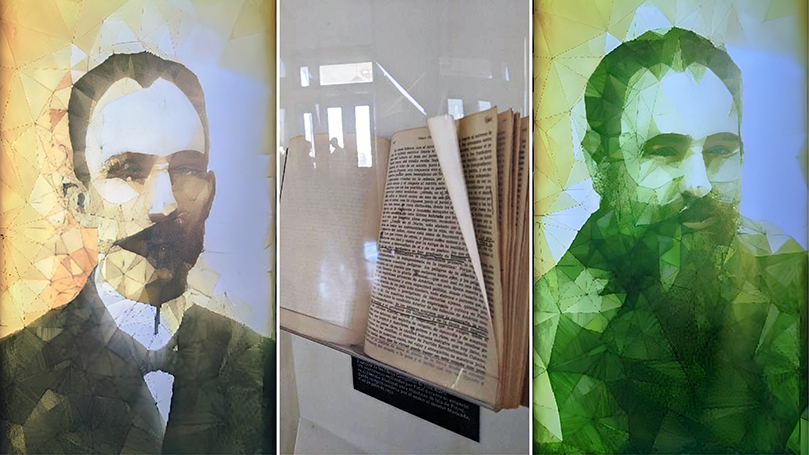
Throughout his life, Fidel Castro famously rejected any public display of himself as the center of a cult of personality. He declared that he wanted no statues, no monuments. Amid the various Che T-shirts available at tourist markets, none depict Fidel. After his death in 2016, officials grappled with the question of how to honor Fidel and to ensure that his ideas and contributions would be understood by new generations, while abiding by his wishes.
Under the direction of the late Eusebio Leal, who oversaw the restoration of so many plazas of old Havana, a decaying mansion on the Avenida Paseo in the Vedado neighborhood has been transformed into a massive center that includes spacious gardens with over 10,000 plantings, a huge house with meticulously restored woodwork, and art deco stained glass windows. Its rooms are dedicated to the achievements of the revolution, the details of Fidel’s life, and the military victories of the revolution. There are special areas for children of all ages, and high-tech presentations that any youthful gamer will appreciate. The Centro is also a library and research institution, with a roster of scholars studying aspects of Cuban history and society.

Centro Fidel Castro Ruz is housed in a 19th century mansion once owned by a wealthy tobacco baron. Like the Museo de la Revolución, which is housed in the opulent presidential palace, the revolutionary history that is recounted here contrasts with the surrounding relics from the ruling class of another era.

Fidel Castro donated all of the gifts that he received from world leaders over the years to museums and other public venues in Cuba. The first room that one encounters in the Centro displays many of these gifts, medals, and honors given to him by various world leaders over many decades, as well as Fidel’s party membership documents.
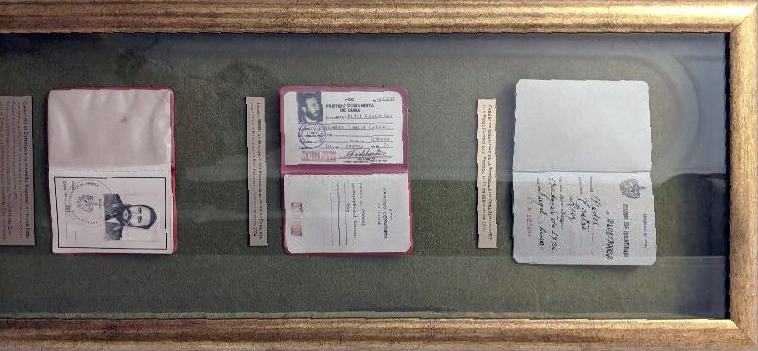
From Castro’s youth and throughout his life, he evoked the memory of José Martí, the Cuban hero of the Wars of Independence, who was killed in battle against the Spanish in 1896. In his speech at his trial after the attack on the Moncada Barracks, Fidel repeatedly invoked the memory of José Martí, whom he called the “Apostle of Cuban History.”
The connections between these two heroes of revolutionary Cuba are echoed here in a digital display that morphs from Fidel to Martí and back again. Another display shows a copy of Martí’s collected works with marginal notes made by Fidel when he was held prisoner on the Isle of Pines.
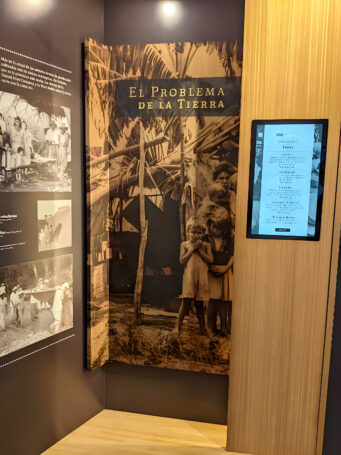 Fidel would have deeply appreciated the room depicting “El Problema de la Tierra,” because it shows the way that collective efforts of the revolution made a real difference in people’s everyday lives. For each of several major problems that faced Cuba in the 1950s, such as land distribution, or issues related to industry and education, the situation before the revolution is depicted alongside the laws and policies implemented by the revolutionary government to resolve that problem.
Fidel would have deeply appreciated the room depicting “El Problema de la Tierra,” because it shows the way that collective efforts of the revolution made a real difference in people’s everyday lives. For each of several major problems that faced Cuba in the 1950s, such as land distribution, or issues related to industry and education, the situation before the revolution is depicted alongside the laws and policies implemented by the revolutionary government to resolve that problem.
High tech displays offer the chance to sample speeches Fidel made over the years, and to explore the struggles around the world in which Cubans participated. The Centro offers a very high tech video recounting the Cuban defeat of U.S.-sponsored mercenaries who invaded in April 1961 at Playa Girón, aka the Bay of Pigs (not pictured here). (Personally, I prefer ”Muerte al Invasor!” by Tomás Gutiérrez Alea and Santiago Álvarez, which presents amazing footage of the actual events.)
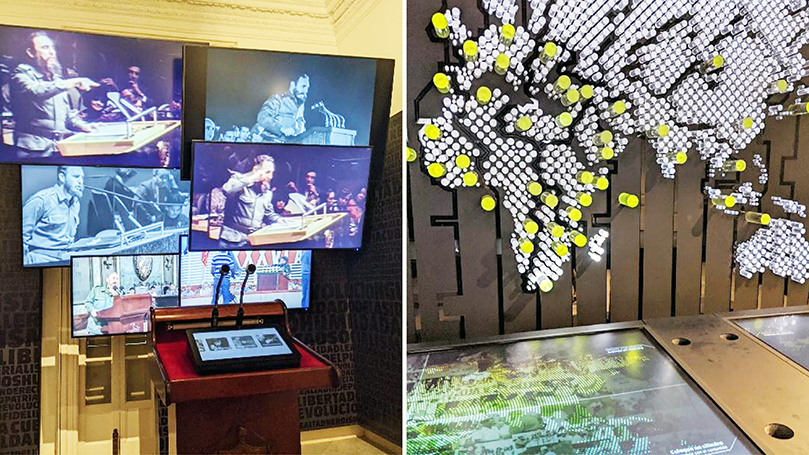
The gardens include installations that are symbolic of different phases of the revolution, such as the rock formation and waterfall, reminiscent of the forest ecoregion of the Sierra Maestra, from which the revolutionaries launched their campaigns. Fidel’s jeep is also on display.
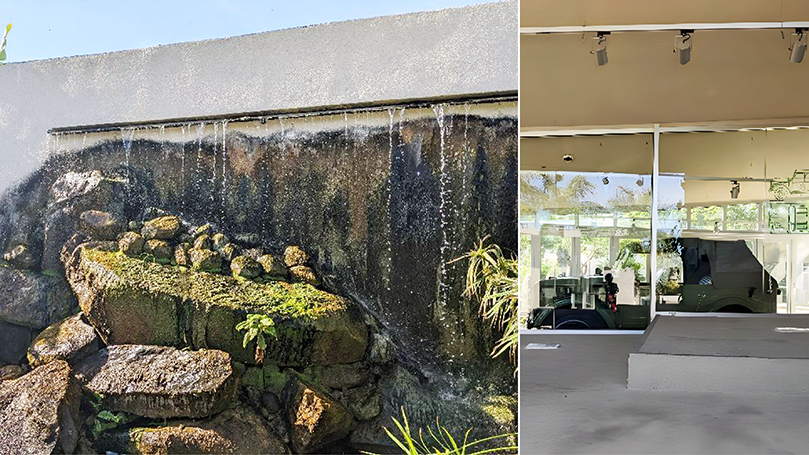
If you are planning a trip to Havana, be sure to arrange ahead of time to have a (free) tour of the Centro Fidel Castro Ruz.
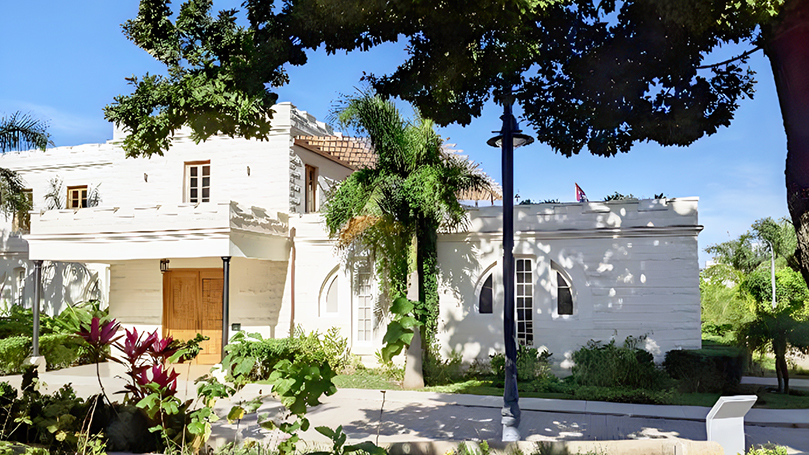
When we visited in January, we hadn’t scheduled a tour, but the staff was very welcoming, and we had a tour guided by a very knowledgeable English-speaking docent, shown below with a model of the Granma.

If you can’t get to the museum in person, you can explore the Centro’s website, including images from the timeline of Fidel Castro’s life. You can also find more information on the museum’s EcuRed page.
Images: CPUSA
Comments
- Tags:
- Cuba
- Fidel Castro


 Join Now
Join Now